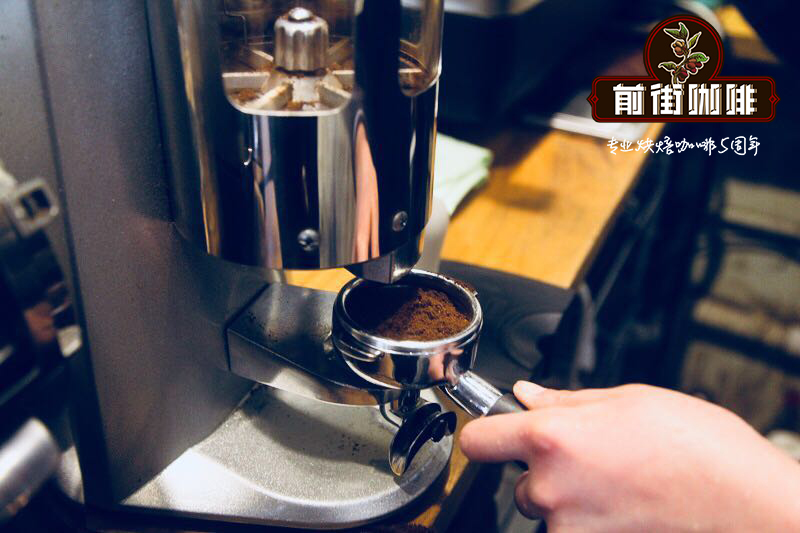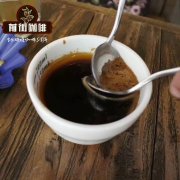When making espresso, do you have the trouble of being stuck to the powder hammer and powder dispenser by the residual powder?

The coffee powder is already slightly sticky, and we also use this to fix the coffee powder to make it perfectly "sealed" between the coffee powder and the inner wall of the powder bowl. Unfortunately, this property of coffee powder also means that coffee powder will stick to powder hammers or other tools. In extreme cases, it can lead to small grooves when pressing powder, and it may even become more obvious each time. This can be avoided only after the surface of the powder pressing tool is wiped clean and dry.
There are three factors that affect the appearance of residual powder: static electricity, moisture and grease.
It is easy to see static electricity at work, such as around the cutter head of a bean grinder, but this is unlikely to be a major factor. The static electricity generated during grinding is not enough to stick the whole piece of coffee to the powder pressing tool. In addition, if static electricity is the culprit, the powder pressing effect will not get worse with the passage of time. The hammer surface of the PUQPRESS automatic powder press is specially treated, and even if there is static electricity in the coffee powder, its electrostatic effect will be weakened, thus reducing the electrostatic effect.
On the other hand, every barista knows what it's like to use a wet powder hammer. Coffee powder has a strong ability to absorb water, so even if there is no water on the surface of the appliance, the moisture in the air will be absorbed by the coffee powder, causing the coffee powder to stick together, making it easier to stick to the appliance. The waterproof coating seems to help reduce the amount of coffee stuck to the powder press, but not once and for all. Coffee still sticks to the surface of the Teflon-coated powder press.
Therefore, the last factor affecting the residual powder-oil pollution, is likely to be the biggest culprit. The coffee oil is released during the coffee grinding, and the coffee is ground to make the coffee powder sticky. "Fats and oils act as an adhesive between coffee powder"-M Petracco, 2005.
With the heat in the work of the grinder, the situation of this residual powder will become more serious. Coffee oil is very sticky, and the oil in coffee will flow more easily at more than 40 ℃. "the oil can easily flow through the cracks and cover the outer surface of the coffee particles with a layer of grease, which becomes semi-solidified and sticky at room temperature," Petracco said.
It is not a practical choice for most of us to control the temperature of the grinding cutter head below 40 ℃. So how else can we prevent the accumulation of this kind of residual powder?
A polished powder hammer may help reduce the accumulation of this residual powder, but it will not solve the problem. According to Matt, some polished hammers absorb the same amount of coffee. Although "polishing" does not completely solve this problem, rough powder hammers are more likely to stick to oil and coffee powder, so it may lead to the accumulation of coffee powder faster and more difficult to keep clean.
The powder hammer coated on the contact surface can improve the accumulation of residual powder by reducing the interaction between the powder hammer surface and the oil or water in the coffee powder. In recent years, with the emergence of relatively new nano-coating technology, great improvement has been made. However, we have not seen that the coated powder press can eliminate the stickiness of coffee powder very well.
At present, the remedial measure we can suggest is to clean as much as possible after each powder pressing. Even if the coffee equipment looks clean, there will be a thin layer of coffee oil after touching the coffee, while the ordinary cloth dispenser or powder hammer will begin to stick to the coffee only three or four times.
From a sensory point of view, the impact of this residual powder is very slight. The coffee powder that resides on the surface of the powder press is only a few milligrams at most, too small to find a difference on an electronic scale in 0.1 grams. As a result, a cup of espresso is not significantly affected by the loss of this small piece of coffee. But as time went on, the trouble became obvious. If the whole shift is not controlled, the accumulation of residual powder will gradually accumulate on the side like those street game consoles, so in a short period of time, we recommend that you dry the powder press or the powder contact surface of PUQPRESS at least once every 10 times.
The article is from CafeCulture, which is reproduced for knowledge sharing. If it involves copyright protection, please contact us to delete it.
Important Notice :
前街咖啡 FrontStreet Coffee has moved to new addredd:
FrontStreet Coffee Address: 315,Donghua East Road,GuangZhou
Tel:020 38364473
- Prev

Coffee cup testing standard and process | Japanese SCAJ coffee cup testing process and scoring focus
The "cup test" can stably control the flavor test record of each cup of coffee, which is closer to the "professional" practice. The goal of taste control is to feel good for yourself. Match the preferences of the target customers in the store? Or is it to focus on popular taste? In fact, you just have to decide the direction of the taste according to your own ideas, and try to get close to that taste. Determining the taste.
- Next

The Origin of Furebai flat white explains in detail how to distinguish between Australia and White, lattes and Cabo.
The origin of flat white is controversial. Both Australia and New Zealand claim to have coined the word. Although I have written a summary of the various definitions of flat white, to really understand the origin of the word, you need to go back to the 1980s. In my opinion, flat white originates from the modesty of coffee cups. I think flat white is the coffee shop that wants to make New West.
Related
- What ratio of water temperature and ground does the smart cup method use to press coffee? The difference between brewed coffee and filtered coffee?
- What is the standard process for the purpose of coffee cup testing? What is the difference between hand-brewed coffee and cup testing?
- How to use hand-brewed coffee paragon small golden balls? How does cold coffee lock in the aroma of coffee?
- Is American coffee black? What is the difference between American coffee and drip coffee?
- Unexpected! Well-known tea beverage brand Lele Tea will withdraw from the Zhengzhou market!
- Starbucks enters the fashion and beauty industry?! Netizen: Give me an ice American eye cream
- Why can American refills for free? The difference between Americano and American drip pot coffee
- Being chased out of the rain in front of Starbucks?! Store: Sheltering from rain under umbrellas poses a safety hazard
- The white moonlight has changed?! Lucky launches "Big Winter Pear American"
- Hand-brewed coffee three-stage method, high-sweet and universal brewing method to share! What does the high sweet water level of hand-brewed coffee mean?

